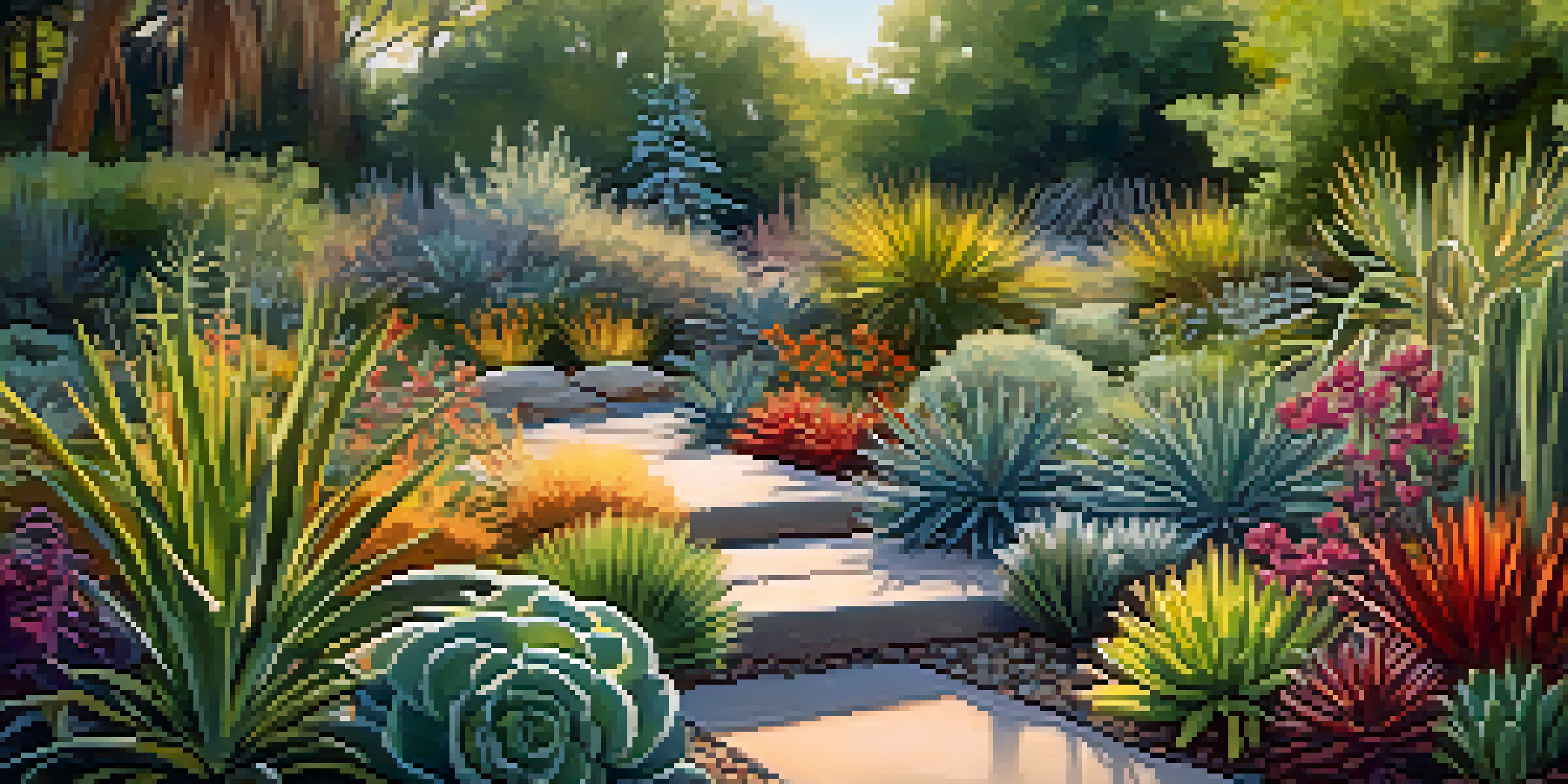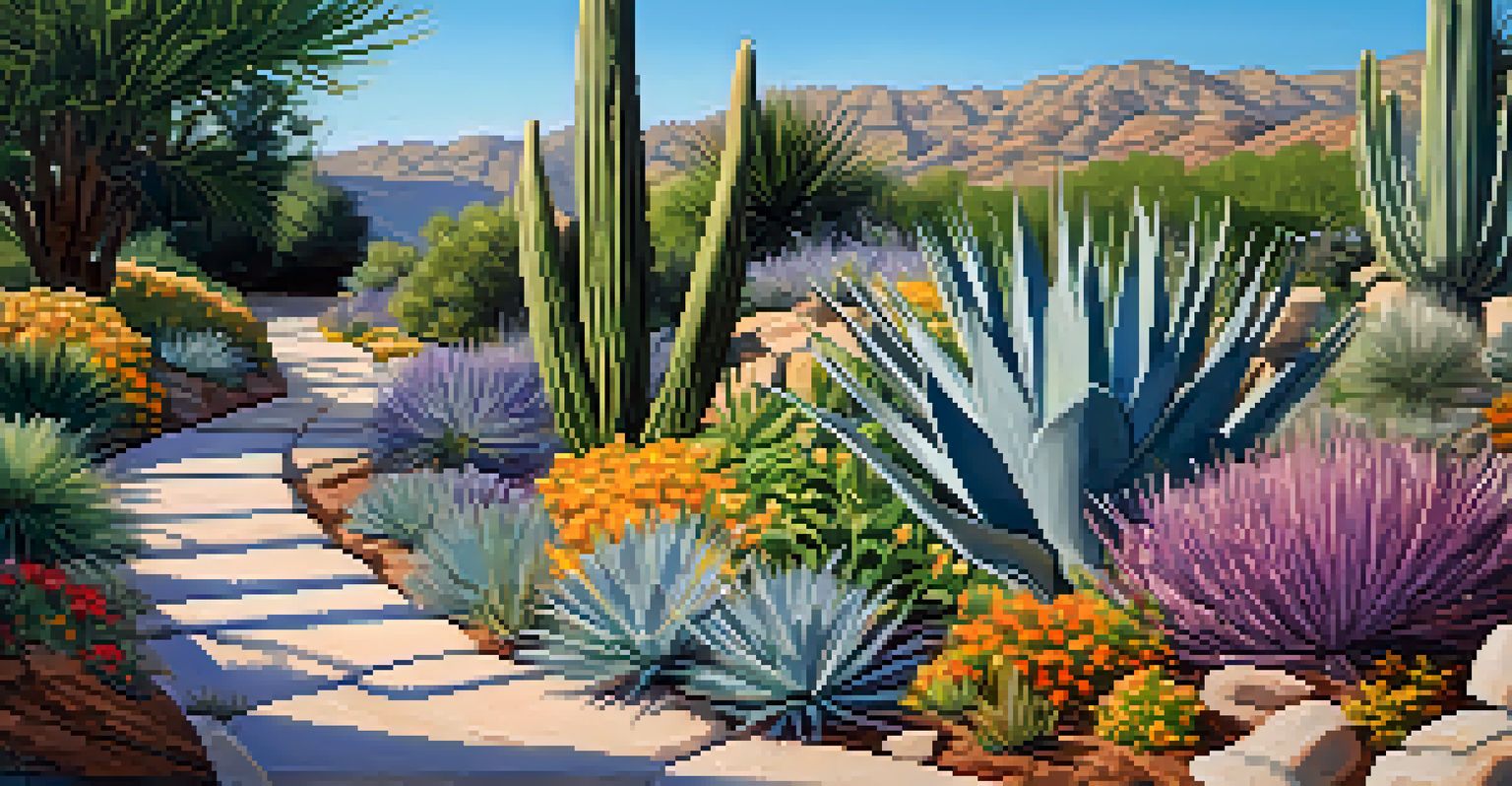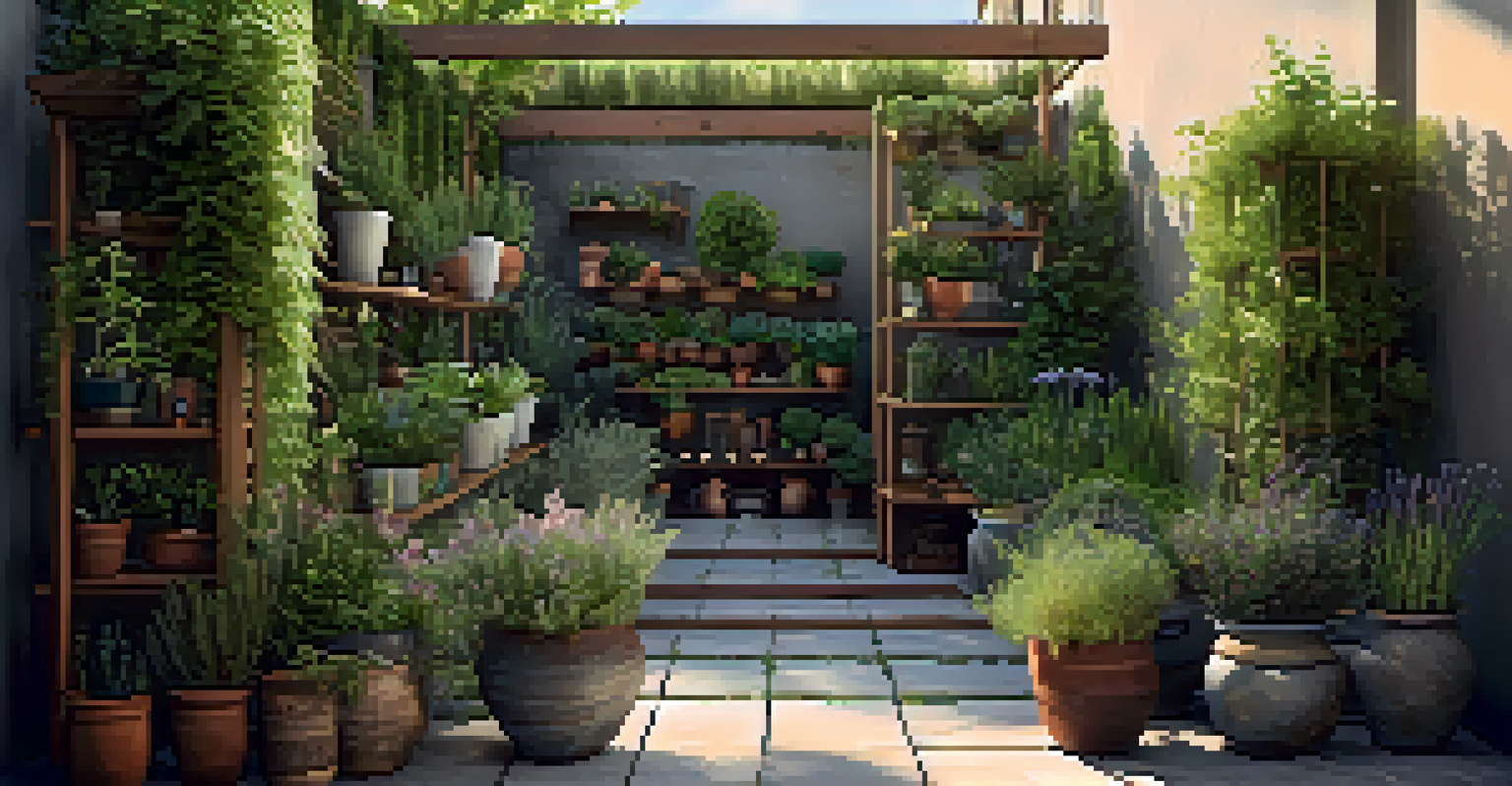Low-Maintenance Plants: Trends for Hassle-Free Gardens

Understanding Low-Maintenance Plants and Their Benefits
Low-maintenance plants are perfect for busy gardeners or those who prefer a more relaxed approach to gardening. These plants often require less water, fewer nutrients, and minimal pruning. This makes them ideal for individuals who want to enjoy a beautiful garden without the constant upkeep.
Gardening is the purest of human pleasures.
One major benefit of low-maintenance plants is their ability to thrive in diverse conditions. Many are drought-resistant, meaning they can survive with little water, which is not only convenient but also eco-friendly. This adaptability makes them perfect for various climates and soil types.
Choosing low-maintenance plants can also lead to cost savings over time. With less need for fertilizers, pesticides, and regular care, gardeners can enjoy a lush landscape without breaking the bank. Plus, these plants often have a longer lifespan, providing lasting beauty.
Top Low-Maintenance Plants to Consider for Your Garden
Some standout low-maintenance plants include succulents, ornamental grasses, and native perennials. Succulents, like aloe and sedum, store water in their leaves, making them perfect for dry environments. Their unique shapes and colors add a modern touch to any garden.

Ornamental grasses, such as blue fescue and feather reed grass, require minimal care and provide texture and movement to your garden. They are also excellent for attracting birds and other wildlife, enhancing your garden's ecosystem. Their resilience to drought makes them a favorite among low-maintenance enthusiasts.
Benefits of Low-Maintenance Plants
Low-maintenance plants thrive in diverse conditions, require less care, and help save costs over time.
Native perennials, like coneflowers and black-eyed Susans, are adapted to your local climate and soil, making them easier to care for. They often attract pollinators and provide vibrant color throughout the seasons, creating a lively atmosphere with little effort.
Incorporating Edible Low-Maintenance Plants into Your Garden
Did you know that you can enjoy the beauty of a garden while also growing your own food? Edible low-maintenance plants like herbs and certain vegetables can be a great addition to your garden. Plants like rosemary and thyme are hardy and require minimal care, making them perfect for busy gardeners.
The best time to plant a tree was twenty years ago. The second best time is now.
Consider planting perennial vegetables, such as asparagus and rhubarb. Once established, these plants can produce for years with little maintenance. They not only provide fresh produce but also contribute to the visual appeal of your garden.
Incorporating these edible plants can create a hassle-free garden that’s both functional and beautiful. Imagine stepping into your garden, harvesting fresh herbs for dinner, and enjoying the vibrant colors of your plants—all without spending hours on upkeep.
The Rise of Xeriscaping in Low-Maintenance Gardening
Xeriscaping is a landscaping method that focuses on water conservation, making it an ideal trend for low-maintenance gardening. By using drought-tolerant plants and minimizing lawn areas, xeriscaping reduces the need for irrigation and upkeep. This trend has gained popularity as more gardeners seek sustainable practices.
Incorporating xeriscaping principles can lead to a stunning garden that thrives even in dry conditions. Plants like lavender, agave, and yucca not only look fantastic but also require minimal water. This strategy not only saves time but also benefits the environment by conserving water resources.
Popular Low-Maintenance Choices
Succulents, ornamental grasses, and native perennials are excellent options for creating a hassle-free garden.
As climate change continues to affect rainfall patterns, xeriscaping offers a practical solution for gardeners. It allows you to create a beautiful, low-maintenance garden while contributing to water conservation efforts, making it a win-win for both you and the planet.
Designing with Low-Maintenance Plants: Tips and Tricks
When designing your garden with low-maintenance plants, consider grouping plants with similar water and sunlight needs. This not only simplifies care but also creates a cohesive look. For example, pairing succulents with ornamental stones can create a striking desert-inspired display.
Incorporating mulch can help retain moisture and suppress weeds, reducing the need for frequent watering and weeding. Choose organic mulches like wood chips or straw, which also improve soil quality as they decompose. This simple step can make a significant difference in your garden's maintenance level.
Lastly, don’t forget about seasonal interest. Mix perennials that bloom at different times to keep your garden vibrant year-round. By planning for continuous blooms and foliage changes, you can enjoy a beautiful garden without the ongoing labor.
Common Myths About Low-Maintenance Gardening Debunked
One common myth is that low-maintenance plants are boring or lack beauty. In reality, there is a wide variety of stunning low-maintenance plants available today. From colorful succulents to vibrant native flowers, you can create a visually striking garden without the hassle.
Another misconception is that low-maintenance gardening means no care at all. While these plants require less attention, they still benefit from occasional watering and minimal pruning. It's about finding the right balance that suits your lifestyle and preferences.
Trends in Low-Maintenance Gardening
Innovative techniques like xeriscaping, smart irrigation, and vertical gardening are shaping the future of low-maintenance gardening.
Lastly, some people believe that low-maintenance gardens are only for dry climates. However, there are low-maintenance options for every climate, including lush, moisture-loving plants. With the right selection, anyone can enjoy a hassle-free garden, no matter where they live.
Future Trends in Low-Maintenance Gardening to Watch
As gardening continues to evolve, we're seeing innovative trends in low-maintenance gardening. One exciting development is the use of technology, such as smart irrigation systems that optimize water use based on weather conditions. These systems can help maintain your garden with minimal effort.
Another trend is the increased focus on biodiversity and native planting. Many gardeners are recognizing the importance of supporting local ecosystems. By choosing native plants, you not only reduce maintenance but also provide habitats for local wildlife.

Lastly, there’s a growing interest in vertical gardening and container gardening, which are perfect for small spaces. These methods allow for creativity and can be designed to require little maintenance while maximizing aesthetic appeal. As these trends continue to grow, the future of low-maintenance gardening looks bright.